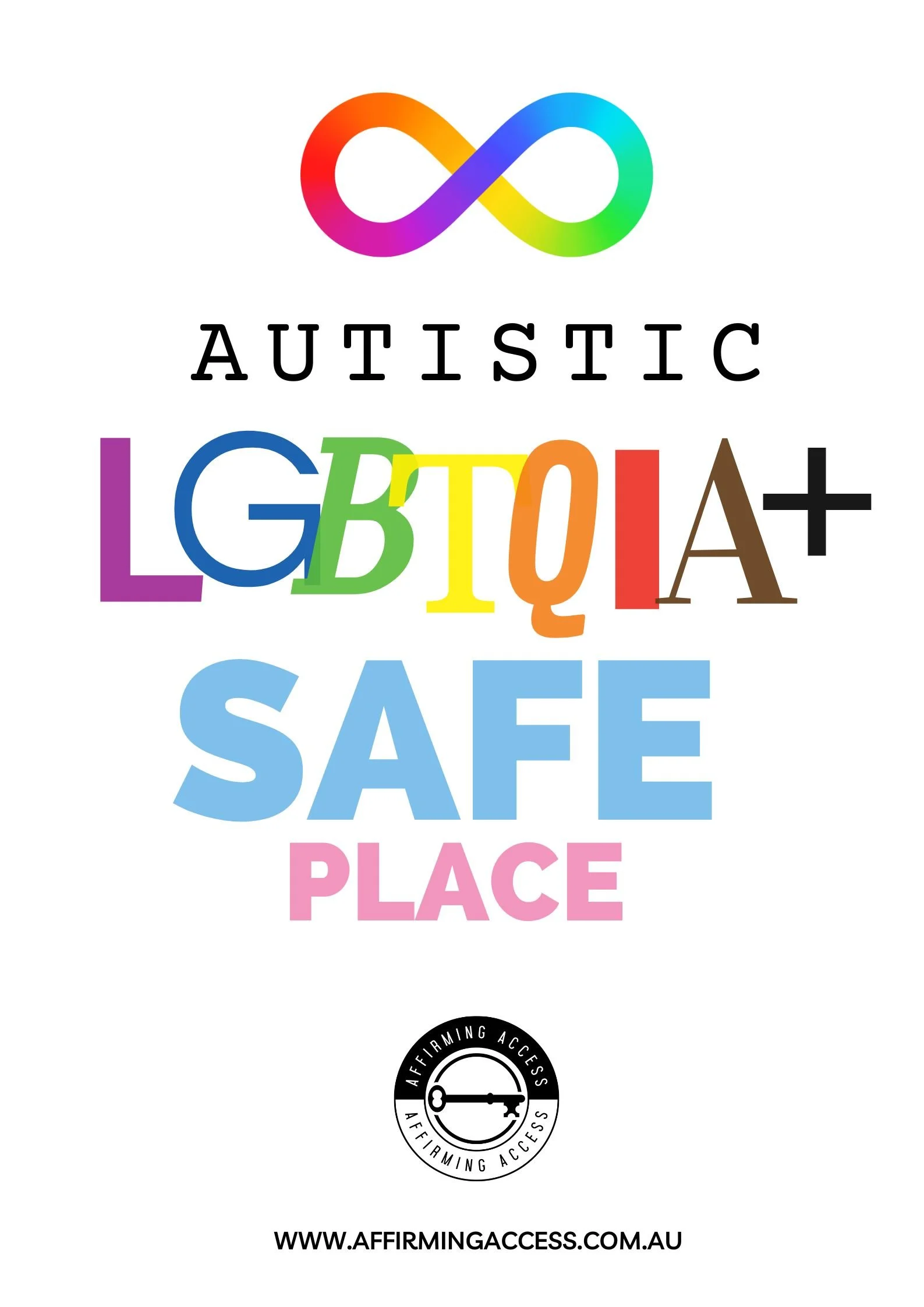Visual Cues of Inclusivity. It helps when services show that everyone is welcome. You can do this by putting up pride flags and the neurodiversity infinity symbol, and by using kind, inclusive words in your flyers, website, and service agreements.
Example: Dylan is bisexual and autistic. They’re nervous about sharing this with their NDIS provider. But when they walk into the office and see a pride flag and a neurodiversity symbol on the wall, they feel more comfortable. It shows this is a place that welcomes people like them.
Sensory-Friendly and Accessible Spaces. Some people find certain environments stressful. It helps to have a quiet space, soft lighting, and places that are not too noisy or overwhelming. Also, not everyone communicates the same way — some prefer email or text instead of talking on the phone or in person.
Example: Ali has ADHD and finds it hard to understand spoken instructions in noisy places. Their support worker sends them easy-to-read steps in an email before each appointment. This helps Ali feel more relaxed and able to focus.
Zero-Tolerance for Discrimination. All staff should be trained to respect people’s names, pronouns, culture, and identity. If someone says or does something disrespectful, staff must act quickly. There should be clear rules about what to do if someone is treated unfairly.
Example: Noah is an autistic gay man. He tells his provider that another worker made a homophobic joke. A inclusive provider will act straight away, take it seriously, and make sure this kind of behaviour is not accepted.
-

CLICK TO DOWNLOAD
-

CLICK TO DOWNLOAD
-

CLICK TO DOWNLOAD
